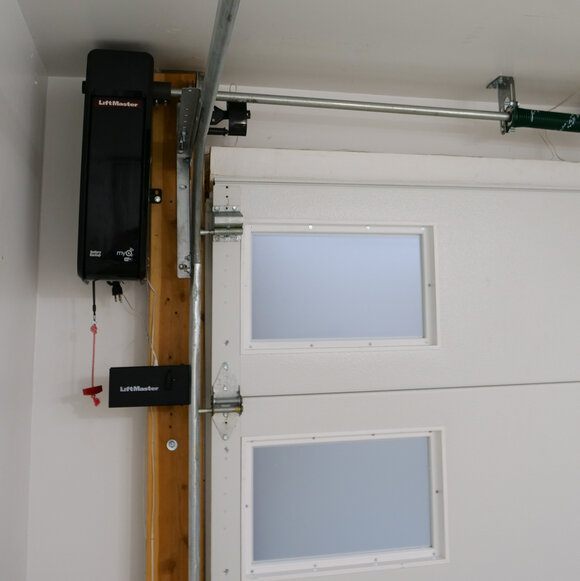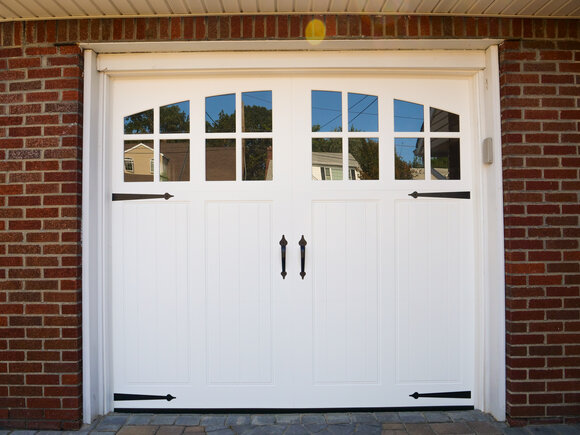Best Combination for a Silent Garage Door





WITH 724 REVIEWS
Click Here To Book Online Now





CLICK
To view local phone numbers

The perfect combination of parts can create a garage door system that is virtually silent.
A noisy garage door can be a headache, literally and figuratively. Depending on your system, the noise can be coming from a variety of places. For homeowners with a detached garage, the noise may not be an issue. But for anyone with an adjacent living space to the garage, a noisy garage door can be disruptive and distracting. So what is the best combination for a virtually silent garage door? You’ll need to consider the opener, spring system, moving parts, and garage door material.

Opener: Jackshaft
Jackshaft openers are mounted on the wall to the right or left of your door and connect directly to the torsion bar to raise and lower your garage door. They do not have a belt or chain, so the opener itself is essentially silent. Additionally, because they are not mounted on the ceiling and there is no opener rail along the ceiling, there is no vibration or noise to adjacent living spaces.
Runner up:
A belt drive opener is the runner up for a quiet garage door system. Belt drive openers run on a steel-reinforced belt and are virtually silent. Belt drives are recommended for homes where there is a living space attached to the garage, as they will not disturb any occupants. Because they do have an opener rail attached to the ceiling, belt drive openers will have a slight vibration in adjacent living spaces.
Spring System: Torsion
Torsion springs are mounted on a torsion tube above your garage door horizontally and are wound up to create torque, or tension. As the door closes, cables attached to the bottom corners force the springs to wind up. When the door opens, the springs unwind and the tension transfers to lift the door open.
A torsion system is quieter than an extension system because it has less moving parts, so there are fewer elements that need to be lubricated or replaced. Extension systems use pulleys which can be noisy if they fail because they squeak and can cause the door to rattle as it’s opening and closing.


Moving Parts: Nylon Rollers
The rollers of your garage door move along the track as the door opens or closes. They can impact a door’s operational smoothness or noise level. There are three different types of rollers available for a garage door.
Nylon rollers are quiet as they roll along the track. They have sealed bearings so they’ll never need lubrication. Plastic rollers are not as loud, but there is no bearing so there’s nothing to lubricate to help the door operate smoothly. Steel rollers create a loud garage door because of the metal on metal contact with the track.
Material: Vinyl Composite or Wood Composite
These two materials are great options for a silent garage door. The three-layer construction offers a sturdy door that is not rattling on the track and the material itself is thick and doesn’t vibrate the way other materials can as they move up and down the track.Why doesn't steel make the cut?
While steel is a very sturdy garage door material when constructed with three layers, it’s not necessarily the quietest. Over time, the bolts start to loosen on the hinges. The contact of the metal of the hinge and steel door results in a louder door as it moves up and down the track.

License
License #120079









